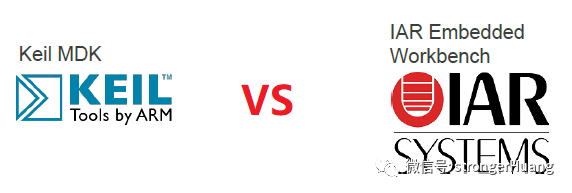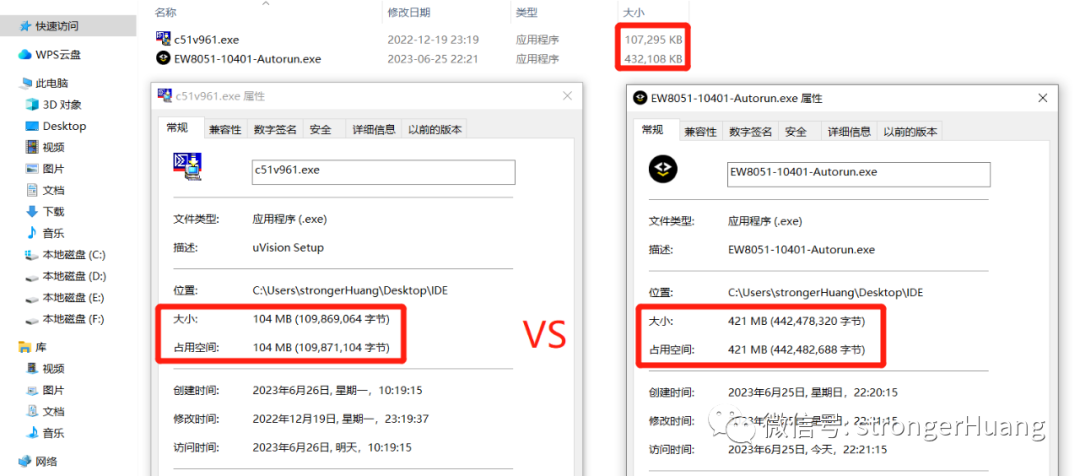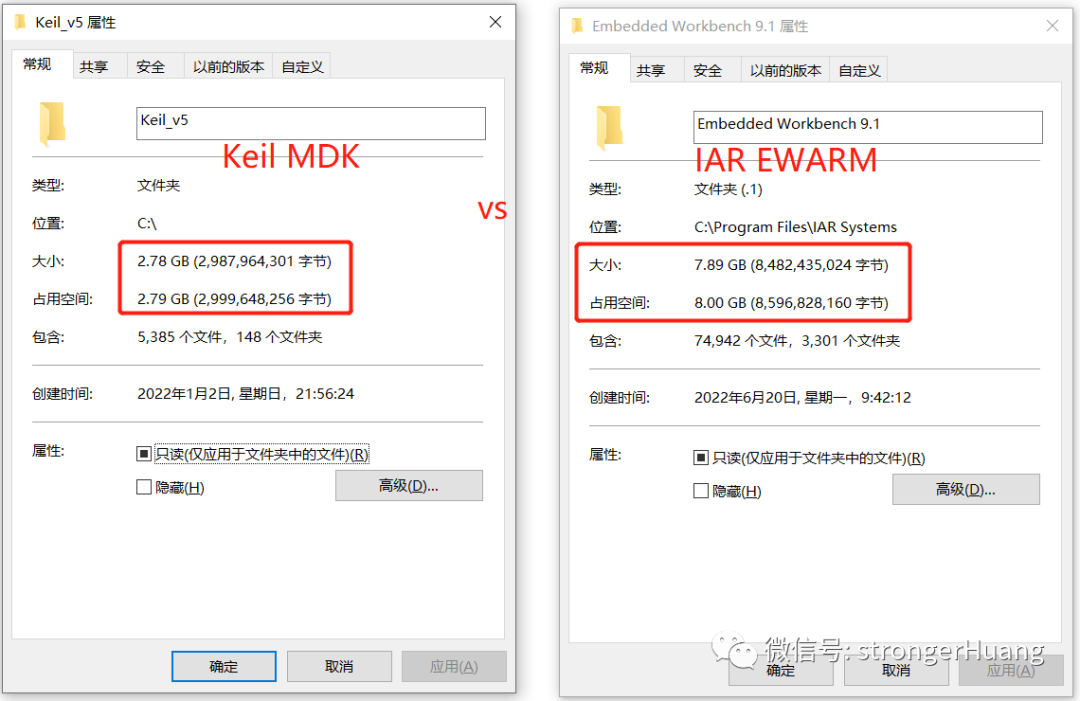When it comes to Keil and IAR, you might think that these integrated development environments have a relatively old interface and are not user-friendly. But here is a fact: No matter if you are a beginner in microcontroller programming or an experienced developer, the proportion of users using Keil and IAR is relatively higher compared to other tools, and not just slightly higher..
Let me ask, for those friends developing microcontrollers here, how many have not been exposed to Keil or IAR?
According to incomplete statistics, over 90% of beginners in microcontroller programming will encounter Keil or IAR. At the same time, many engineers with over ten years of experience continue to use Keil as their primary tool.
In fact, there is another phenomenon that shows that Keil and IAR are the main development tools for microcontrollers, which is that many MCU manufacturers recommend using IDEs, or provide code examples that are based on Keil or IAR projects, especially for domestic 32-bit MCUs (you can verify this on the official sites).
As mentioned above, Keil and IAR are currently the mainstream integrated development environments for microcontrollers, so should you choose Keil or IAR?
My answer is: install both and use them for a while; whichever you find more suitable or easier to use is the one to go with.
My principle is: there is no best, only what is suitable.
However, one thing is clear: before making a choice, you need to understand and try both extensively. How can you know if something suits you without trying it?
Returning to the question of choosing between Keil and IAR, from my observations and understanding: more people choose Keil than IAR.
Whether it’s backend messages, WeChat groups, or private messages, the discussions are more about Keil, while discussions about IAR are relatively fewer.
This means that the current overall situation is: Keil is more popular than IAR.
Why Is Keil More Popular Than IAR?
Both Keil and IAR are mainstream IDEs for microcontroller development, but when compared, Keil still outshines IAR. Here are a few reasons for this analysis.
1. Keil Is More Suitable for Beginners
A large portion of microcontroller beginners come from learning the 51 series, and Keil C51 is the best choice for C51 microcontrollers, leading many beginners to choose Keil, which they continue to use as their primary development tool after entering the workforce.
At the same time, these beginners also use Keil as their primary development tool when working with 32-bit microcontrollers (e.g., STM32, GD32).
2. Keil Has Smaller Installation Files
Keil and IAR have different versions of software for different types of microcontrollers; Keil has four: C51, C251, C166, MDK, etc. IAR has more: EW8051, EWAVR, EWMSP430, EWSTM8, EWARM, etc.
However, regardless of the version, through “horizontal comparison,” whether it’s the installation package, installation time, or disk space occupied after installation, Keil is better.
Keil Installation Package Is Smaller:
For example, the latest version of Keil C51 V9.61 is only 104M, while IAR EW8051 V10.40 is 421M.
Similarly, for other versions, for instance, Keil MDK V5.38a is only 887M, while IAR EWARM V9.40.1 is 1.61G in size.
Keil Installation Time Is Shorter:
Installation time cannot be quantified as it varies with different computer configurations.
But on the same computer, comparing installation times shows a significant difference between Keil and IAR, especially for ARM version software; for example, the latest version of Keil MDK V5.38a may complete installation in just 2 minutes, while the latest version of IAR EWARM V9.40.1 may take over 10 minutes to finish.
Keil Occupies Less Space After Installation:
Not only is the installation package smaller, but the files (folders) occupied after installation are also smaller. Especially for ARM version software, for instance, Keil MDK V5.36 occupies only 2.7G of disk space, while IAR EWARM V9.30 occupies 8G.
3. Keil Has Lower Computer Configuration Requirements
If you pull out a computer from ten years ago, you can still manage to use Keil, but using IAR would be quite challenging.
Of course, this refers to the same conditions (installing software from the same period), for example: using Keil MDK V5.30 and IAR EWARM V8.50, you will find that the CPU usage spikes while using IAR EWARM, making the fan noise unbearable.
4. Keil Debugging Is More Convenient
When it comes to debugging, for chips like STM32 and GD32 with ARM cores, if Keil MDK claims to be second, I don’t think anyone would claim to be first.
Why? Because Keil and STM32 are like “children of ARM,” of course, there may be a few debugging features/components that other tools might do better, but overall, the debugging capabilities of Keil are still superior.
Of course, IAR’s debugging capabilities are not weak compared to many other manufacturers’ tools; at least most common functions are still available.
5. Keil Has Better Compatibility
Here we compare Keil MDK and IAR EWARM.
You will find that using a higher version of Keil software to open a lower version project file usually poses no problem. For example, using Keil MDK V5 version software, you can directly open V4 version files. The official has made it compatible; you just need to click “migrate”.
However, with IAR EWARM, after crossing major versions, opening various issues arises, especially when crossing large versions like from V6, V7, V8.
Of course, Keil also has compatibility issues, but overall, it has fewer problems than IAR.
Finally, everyone is welcome to leave comments and discuss: do you choose Keil or IAR? What is your reason?
Copyright belongs to the original author; if there is any infringement, please contact for deletion.
Do You Call This Piece of Junk a CPU?
A Day Ruined by a GPIO Pin
RTOS Implementation of Dual-Core MCU Message Communication
→ Follow for More Updates ←






